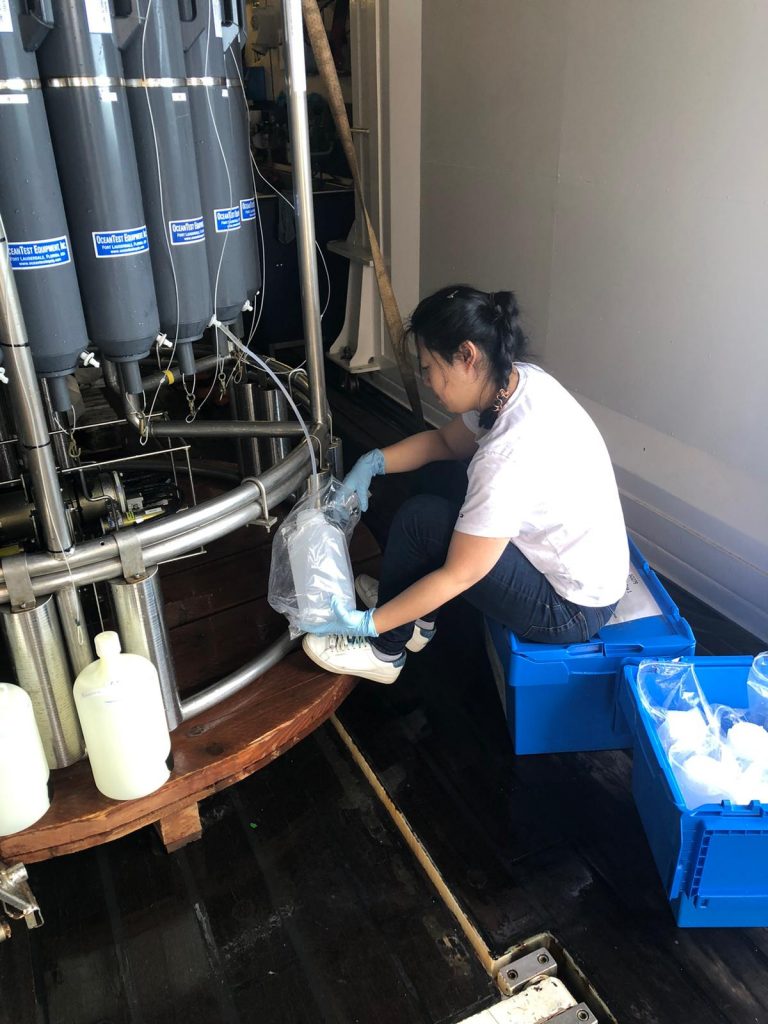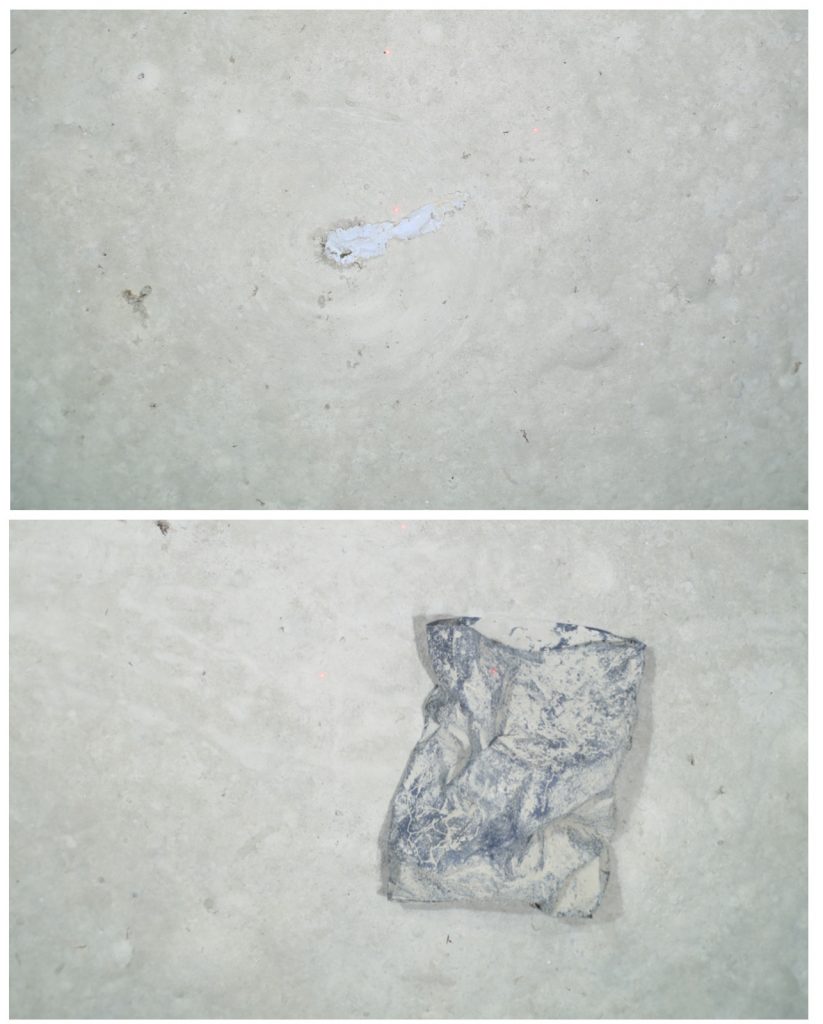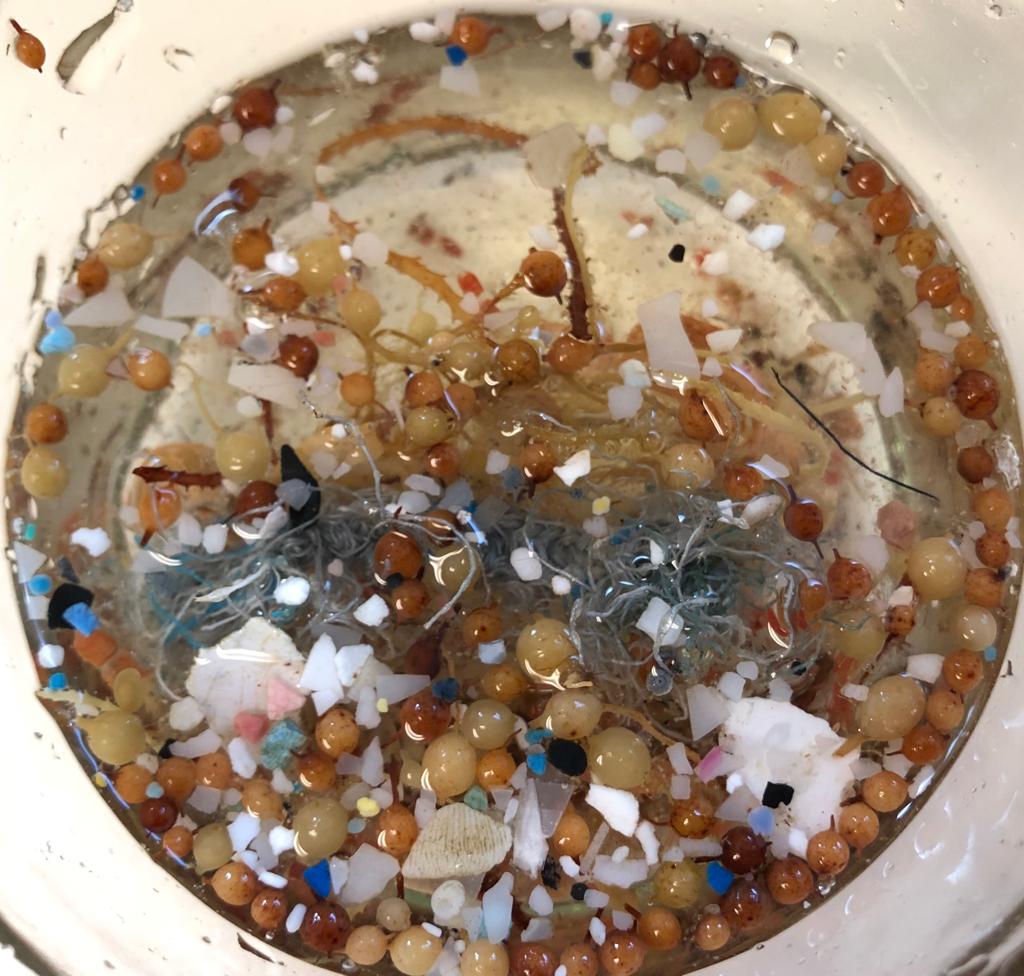Our 4-day transit to our next sampling station was finally finished on December 13 where we arrived on station no. 3 west of Madeira and the Canary Islands. The weather was as promised, with relatively calm seas, bright sunshine, and air temperatures approaching 20°C.
The afternoon was dedicated to net-sampling. Erik Borchert from the Project “PLASTISEA” was finally able to deploy the Neuston net with the aluminium Catamaran. This device is especially good to sample at open seas and can be towed very straight through the water surface. We towed the catamaran for approximately 30 min. Erik retrieved a sample clearly showing microplastic particles floating on the surface of his sampling dish.

After three consecutive catamaran tows the multi-net team was getting ready to deploy their device. The multi-net deployment took approximately 9 hours, however the team was deemed with bad luck, as the deployment didn´t work out. The net somehow turned in the depths and the nets entangled. What a disappointing result after a 9-hour shift.

The whole night was dedicated to the deployment of the CTD-rosette and in-situ pumps. In the morning of December 14 we finished our station by taking sediment samples with the Box corer. Feifei Deng a Post-doc researcher from the Helmholtz-Zentrum Geesthacht is taking sediment samples and water samples for trace metal analyses.

While leaving station no. 3 we deployed the OFOS (Ocean Floor Observatory System) to monitor the seafloor. The OFOS consists of two different units: an onboard unit and an underwater unit. The underwater unit consists of a metal frame, which contains a video and photo camera to study the seafloor visually. The onboard unit is used to control the correct operation of the underwater unit as well as to enable a first live-evaluation of the video material, on-command photography and in the end to store the data for further examination. Teams of two took 3 shifts and monitored the seafloor. At approximately 4000 m water depths we discovered some plastic debris and a plastic bag.

